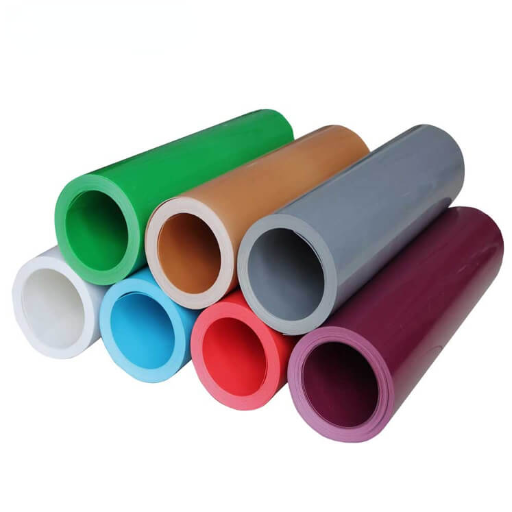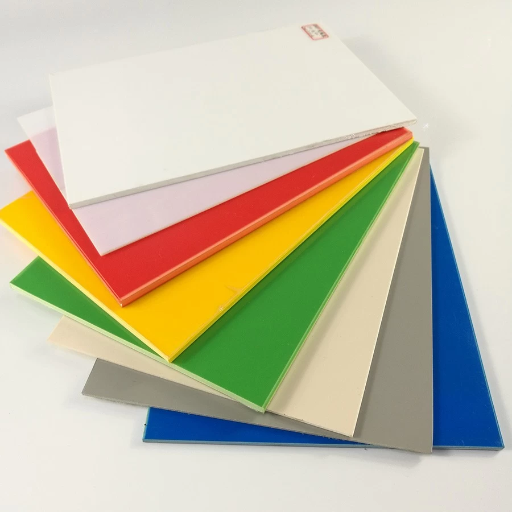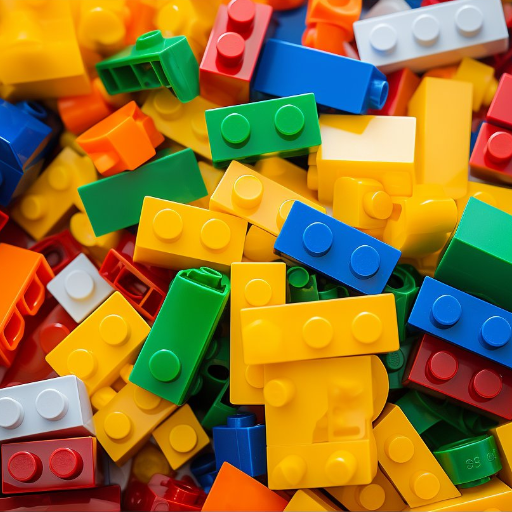Plastic is a key material in numerous industrial processes in modern production, and the choice of a specific type of plastic affects product service life, operational parameters and price. ABS and PS are the most basic types of polymers which are used in the production of goods. Nevertheless, what are the differences between them and which one corresponds more to your requirements? This paper focuses on the ABS and PS plastics processing. It concentrates on the features, equipment, and employment possibilities of the two kinds of plastics. When you reach the conclusion, you will be able to understand how the two types relate and aids in coming out with a decision for the forthcoming assignment.
What are the Key Mechanical Properties of ABS and PS Plastic?

- Impact Resistance: It is no secret that ABS is one of the toughest materials, which is because it is tough in view of impact and crack under pressure in short-term/peak stress. Due to the growing interest in avoiding plastics usage, a concern on how the plastic would be brittle and will crack under these short term stresses negating the recycling.
- Flexibility: It is characterized by less flexibility and higher stiffness than ABS and can also be used for “impact assessment,” as many components in devices are made of it.
- Tensile Strength: This is similar to the quantitative expression of internal forces that different faults and processes need to overcome in the form of deformation. According to design principles formulation, the values of the internal forces at which destruction of what is referred to as the strength limit will occur are determined.
- Temperature Resistance: It has been found out that this material can function properly at varying high temperatures. It has been established that this is usually so especially where the temperature is cold.
PS Plastic:
- Impact Resistance: Polystyrene (PS) does not have good impact toughness that is why when certain amount of force is applied to it, it may lead to the parts breaking.
- Flexibility: Several researchers have reported that Polystyrene (PS) is rigid and stiff since it lacks the suppleness that Acrylonitrile Butadiene Styrene (ABS) demonstrates.
- Tensile Strength: Unlike ABS which is widely known for its high tensile strength in many applications, PS has a tensile strength below the recommended strength in high stress conditions.
- Temperature Resistance: Polystyrene materials resist elevated and reduced temperatures as a matter of fact and lose most of their mechanical properties—solidified temperature.
Comparing these properties shows ABS is typically selected and utilized accordingly as it is durable thus managing demanding applications better than PS. Therefore, PS performs well for uses that are lightweight, inexpensive and of small proportions.
How does the Tensile Strength of ABS compare to PS?
The tensile strength of ABS will typically vary from 29 MPa to 43 MPa, which is significantly stronger than PS, which generally has tensile strengths around 30 MPa and even less, depending on the effector and the sample tested. This value clearly indicates that, when pulling at something, ABS has a higher tolerance before it crumples in comparison to PS. Hence, it is requested that materials meant to have high endurance in cases of mechanical abuse use carbon steel in their prestressing. In addition to the above, that was most prominent in the feature about the impact on the tensility of the materials. ABS does fare well when pulling strands out, shall we say? Deterioration of bearing property beneath high tensile loads when stress exceeds the limit of an intact material.
Are there differences in Deformation between ABS and PS?
In the case of ABS and PS, the phenomenon of deformation is found quite inconsistent owing to the material’s unique molecular structure and mechanical properties. Since ABS represents a toughened polymer, it can fend off adverse impact as well as distortion due to external loading better than most other organic and inorganic materials. This explains their resilience to repeated dynamic stress (such as bending, compression, or torsion loading of the material) with minimal damage to the part due to the energy absorption and distribution that the part undergoes. Unfortunately, polystyrene and more particularly its high impact grade (HIPS Grade) will easily fail either through cracking, breaking through sudden impact and as well as elevated stress levels for a long time. On the same note, when there is deformation of PS, it is very likely to exhibit brittle mechanical failure, showing sharp breaks without apparent plastic deformation of the material. Bearing in mind these fundamental core understandings, the choice is that, material and product performance-wise, ABS would be the choice material between the two, PS being appropriate for the less strenuous applications where less mechanical strength is demanded and the cost factor is high.
What are the Common Applications of ABS and PS Plastic?

ABS Applications:
- Automotive industry: PS or Polystyrene, which is more commonly called, is usually used in car dashboards, trim work, and mixing it with large details like hub caps.
- Consumer electronics: most of its properties, the strength mostly but also the impact resistance, it is used in the casing’s keyboards, monitors and printers.
- Household appliances: Such as storage units, steam cleaner parts or power tool housings make use of this in the form of thermal plastics.
- Toys: Used for shaping plastic toys with good mechanical properties, such as elasticity. What are the most appropriate classic traditional materials for this specific industrial product or design?
PS Applications:
- Packaging materials: This material is ideal for manufacturing cutlery and food trays and is also very effective for packaging lightweight goods. These materials are used for producing lightweight goods such as disposable cutleries, food trays, and chip fillers.
- Disposable consumer goods: This material is used extensively in the production of utensils in the form of cups, plate and their accompanying lids.
- Insulation materials: Where thermal insulation for construction work is required, expanded polystyrene (EPS) is utilized.
- Medical industry: Because of the ease of molding and cost effectiveness, it is found in commonly used assemblies such as test tubes and petri dishes.
What industries typically use ABS Plastic?
- Automotive Industry: In the automobile industry for example; the most utilized is the light weight and impact resistant ABS plastic in parts such as dashboards, wheel covers, and body panels.
- Consumer Electronics: In conjunction with thermal stability, ABS (acrylonitrile butadiene styrene) finds multiple application is electronic housings for devices such as computers, cameras, and televisions.
- Construction Sector: One more use is in the piping systems in the construction industry as a material for sanitary, heating and industrial water tubing and accessories forgings due to its resistance to chemicals and corrosion.
- Toys and Facilitating Appliances: The safety and adaptability of ABS has proved to be very useful in the toy making business, and there is large amount of usage of ABS granules for accuracy on construction blocks and engineering kits for specialists and individuals with interest in fields.
- Medical and Healthcare Equipment: Suchlike products as nebula contains, surgical tools and pill dispensartment putekts use hyper cleanable component ISO Abs Plastic (Abs) as it is extremely easy to clean.
Where is Polystyrene Plastic commonly applied?
Polystyrene resin is a very light material and is used in various industries for low-cost, ease-of-processing applications. Some of the major uses of Polystyrene are in the manufacturing of disposable products, such as packing materials including containers, cups, and plates, and insulating materials such as expanded polystyrene (EPS) for protecting items during transportation and such temperatures. It is also used significantly in the building sector where insulation boards of EPS and other such lightweight fillers are integrated to reduce the building’s heat loss and improve the building’s design.
Another important application area is electrical and electronic technology, where polystyrene is applied in the production of electric appliances on account of its excellent dielectric properties and ease of molding. In addition, in the health sphere, polystyrene is also used for the production of such devices as laboratory trays, test tubes, and petri dishes since it offers transparency and antiseptic properties. Polystyrene is also utilised in manufacturing the lightweight interior of vehicles, whose aim is to reduce the weight of the vehicle and improve the car’s fuel efficiency. These are just several that show why polystyrene is such a useful component in many industries around the world.
How do the Material Properties of ABS and PS Compare?

Since the characteristics of ABS (Acrylonitrile Butadiene Styrene) and PS (Polystyrene) materially differ, they find true purpose in unique applications. Speaking bluntly, even though ABS on some occasions is able to prove temperature resistance, the cracks will be visible even now. ABS is especially popular for industrial applications, particularly in parts of automobiles and CFLs where it is ideal for absorbing the force of an impact, occupants and the vehicles themselves. The engineering plastic, ABS is designed to endure much higher temperatures than PS can at the same time.
On the contrary, Polystyrene is desired for the reasons of its resistance, minimal weight, and ease of shaping as a material. It is well suited for applications where advantageous features such as maximum transparency or very low cyclization are necessary such as the structuring of packages and development of analytical equipment and other various products which get thrown away after their use. Nevertheless, Polystyrene is more brittle and less resistant to the propagation of cracks than ABS, so it is not suitable for high stress environments.
What is the Heat Resistance of ABS Plastic?
Assuming that lumped heat resistance gains click in as the temperature soars higher than 80°C, ABS is quite capable of handling such temperatures for these applications. But once ABS components hit about 100°C, though much lower heat deformation temperatures can be accepted for insert component fittings while many ports fail to operate. Some ABS high-performance rubber has improved burning properties due to the addition of fire-retardant type additives. And under only moderate heat, such as inside the passenger compartment of a vehicle, or in consumer products, or appliances, these grades of ABS has designers changing other materials to ABS. However, for severe heat exposure, other materials with very high heat resistivities are more appropriate.
What are the Strength and Impact Resistance levels of ABS?
What are the Differences Between ABS and PS Plastic?

- Material Properties
Well, ABS (Acrylonitrile Butadiene Styrene) is well known for its impact strength, ductility, and toughness, which enable its use in applications wherein the material has to be resistant to some impacts and absorb some energy. PS (Poly Styrene) on the contrary is denser but more fragile and it lacks the impact resistance of ABS which is suitable for lower impact applications.
- Application
ABS is popularly utilized in various types of consumer goods, such as automotive, electronic and protective equipment. PS is commonly seen in packaging, and some other applications like disposable tableware and some wall insulations because of its brittleness and the fact that it is relatively cheap.
- Thermal Resistance
When ABS is compared to PS, it has a better heat resistance and this in turn makes any high temperature applications more apt for this material. PS, on the other hand, is known to distort or reshape when heated and hence this cannot be used effectively in higher temperatures.
- Cost
ABS tends to be costlier than PS and may be the first choice for applications requiring high quality construction for example interior of the car or the appliance. ABS, on the other hand, is more expensive but with better end-use and durability properties, it is more appropriate for difficult applications.
With this regard decision must purely come out workable niche fields or intensified applications of ABS vs generalistic options of PS which should rather be quite limited.
Compare the Differences Between ABS and PS Plastic
|
Key Point |
ABS |
PS |
|---|---|---|
|
Material Type |
Thermoplastic polymer |
Thermoplastic polymer |
|
Strength |
High impact resistance |
Lower impact resistance |
|
Flexibility |
Good flexibility |
Brittle under stress |
|
Temperature Resistance |
Performs well in high temperatures |
Limited thermal tolerance |
|
Surface Finish |
Glossy or matte |
Glossy |
|
Durability |
Strong and long-lasting |
Less durable |
|
Application |
Structural and high-performance uses |
Lightweight, low-cost uses |
|
Chemical Resistance |
Resistant to many chemicals |
Moderate chemical resistance |
|
Cost |
Higher cost |
Lower cost |
|
Recyclability |
Recyclable |
Recyclable |
|
Weight |
Heavier |
Lighter |
|
Ease of Processing |
Slightly more complex molding process |
Easier to process |
|
UV Resistance |
Moderate (requires additives for improvement) |
Poor (prone to yellowing under UV exposure) |
|
Common Uses |
Automotive parts, electronics, durable goods |
Packaging, disposable cups, insulation |
|
Moisture Resistance |
Good when additives are included |
Moderate |
What are the Advantages and Disadvantages of using ABS vs PS?
Advantages of ABS Plastic:
- High Impact Resistance – ABS has higher levels of toughness and hence perfect in high durability applications such as automotive and electronics.
- Thermal Stability – With greater thermosetting properties than other plastic materials, ABS is capable of retaining its mechanical behavior while exposed to heat and subjected to stress.
- Machinability – Manufacturing of ABS takes place very easily through different techniques such as injection molding, extrusion, and even 3D printing among many. Manufacturing has even become more flexible.
- Chemical Resistance – Acrylonitrile-butadiene-styrene is resistant to many acids, alkalis, and hydrocarbons, enhancing its suitability in industries and facilities.
Disadvantages of ABS Plastic:
- Higher Cost – ABS may be more costly than PS, implying it has increased costs when it is used in a product where the overall cost needs to be minimized.
- Lower UV Stability – ABS degrades after extended hours of ultraviolet exposure thus necessitating additives or coatings if used outdoors.
- Environmental Concerns – ABS is non-biodegradable, making the achievement of environmentally friendly objectives and disposal difficult.
Advantages of PS Plastic:
- Cost-Effectiveness – Polystyrene is generally more cost effective implying that it is more susceptible to use in such manufacturing operations as packaging and throw-away items in high quantities.
- Lightweight – Less density is beneficial in lowering the weights of the products produced which is ideal for transport and ease of application.
- Clarity and Surface Finish – On the other hand, PS enables a clear and slick identified surface finish which makes it ideal for such applications as food containers and display places in some outlets.
Disadvantages of PS Plastic:
- Brittleness – PS is prone to fracture even when a low strain-level is applied and hence, it is difficult to use this material for applications where stiffness and strength are key aspects.
- Limited Thermal Resistance – It is subjected to softening action at relatively low temperatures and hence, its application is limited to those that are within the lower temperature range.
- Environmental Impact – Exposure to which PS in the mass production of the various one-time use articles is a contributing factor to plastic disposal issues, because it contains materials that are hard to recycle.
Which is the Right Material: ABS or PS?

The preference of whether to use ABS or PS lies on the needs and conditions of the very application as below:
- Choose ABS if you are looking for a much tougher, more resistant and long lasting material. It can be economically considered for situations when products will be repeatedly used, damaged or worn such as within industries like automobile, consumer electronics and coatings.
- Choose PS if convenience and cost are the main priorities. This is especially useful in products that are light in weight, expandable in single use or in designs having a very low stress levels used for only a very short period of usage, for instance packaging, bowls and all- in one cups.
Conclusively, ABS would be the best option as one of the applications that are long-lasting and thus where particular properties are always required shall too it more appropriate for lightweight cost-oriented application even more so than ABS
What should you consider for 3D Printing with ABS and PS?
In every project of 3D printing using ABS and PS plastic materials, it is important to bear in mind that these materials have different physical properties and their application modifications result in different methods of printing. Quite the opposite, ABS (Acrylonitrile Butadiene Styrene) is a material which exhibits very high strength and toughness, but it uses higher extrusion temperatures, usually ranging between 220°C and 250°C. To avoid warping, a heated build platform (roughly maintained at 90°C to 110°C) is essential as well as enclosing the printing area in order to improve accuracy and reduce cracking due to the rapid volume decrease after polymerization. Indeed, ABS material threading will generate styrene fumes during the processing and therefore, proper ventilation and and filtration system will have to be installed for that system.
PS (Polystyrene) is not so common in 3D printing, but processes and pricing quite draw the attention of manufacturers. Its extrudetemp, extremely hemabie is relatively lower, about 190˚C -within 220˚C. On the contrary, the low properties of impact improve the applications of lightweight objects that do not gain mass and high strength. Just like ABS, working with PS also has aromatic materials emitting — Volatile Organic Compounds (VOC), hence, the need for proper air conditioning.
What are the Types of Plastic to consider for specific applications?
- PLA (Polylactic Acid)
One such thermoplastic is Polylactic Acid (PLA) which is biodegradable and can be produced from renewable sources like sugar cane or corn. It finds wide application in 3D printing, making packaging and disposable tableware because of its lower toxicity and user-friendly nature. It is favoured for its print precision and good surface finish; however, it cannot be used in high temperature applications as the glass transition temperature is about 60ºC.
- ABS (Acrylonitrile Butadiene Styrene)
ABS is a plastic that is widely acclaimed for its strength and ability to withstand high levels of impact. This plastic is used to make numerous items, including car parts, toys, and consumer electronics. It has a higher temperature at which it melts, is in the range of 210°C to 250°C and is quite durable as with the rough handling. At the same time, however, it emits volatile organic compounds (VOC) while printing printouts, which can only be controlled with the availability of effluent treatment systems.
- PETG (Polyethylene Terephthalate Glycol-modified)
PETG is PET with an added capability of flexibility and enhanced chemical resistance. PETG is often molded into drink or food holders, medical device parts and clear water bottles. It has the quality of being tough and yet maintaining a high degree of transparency and toughness which is appealing for semi-structural and transparent component.
- Nylon (Polyamide)
Nylon is popular due to its strength and resistance to wear and tear it is often combined with metals in the manufacture of gears and rollers. The material can melt at anywhere between 250℃ and 275℃ and this is why it is suitable for use in heavy duty processes, but measures should be taken to control the moisture content of the environment since it has a dampening effect on the absorptive capabilities of this material.
- Polycarbonate (PC)
Polycarbonate is known for its exceptional impact strength, transparency, and resistance to heat, up to 140°C at the max. The most common application of this material is in plastics and bulletproof glass. In spite of the high crystalline melting plastic and the degradation of the plastic for outdoor applications due to UV exposure, may prevent its widespread use.
- TPU (Thermoplastic Polyurethane)
TPU is used in a wide variety of applications in which it allows for extensibility and chemical resistance. It is often selected as in the production of semiflexible constructions like mobile shells, wheels, or gaskets. The stretchability of TPUs, as well as their shape memory, grants them flexibility, but in order to achieve these properties, normal processing may not be sufficient.
Reference Sources
-
ABS vs. PS Plastic: Key Differences and Applications:
- ABS: Known for toughness, impact resistance, and versatility. It is widely used in automotive parts, electronics, and toys due to its durability and heat resistance.
- PS: Lightweight and easy to process but more brittle. Commonly used in packaging, disposable products, and transparent items like display cases.
- Key Differences:
- ABS has higher impact resistance and heat deflection temperature (~215°F) compared to PS (~203°F).
- PS is more cost-effective but less durable than ABS.
-
ABS vs. PS: A Comprehensive Comparison:
-
- Physical Properties:
- ABS has higher tensile strength (37–110 MPa) and impact resistance (70–370 J/m²) compared to PS (32–44 MPa and 19–45 J/m², respectively).
- PS is more rigid but less durable.
- Thermal Properties: ABS withstands higher temperatures (80–100°C) than PS (70–90°C).
- Chemical Properties: ABS resists corrosion better than PS but absorbs more moisture.
- Processability: ABS is better for complex shapes due to its superior processing properties.
- Physical Properties:
-
Frequently Asked Questions (FAQ)
Q: What is ABS plastic, and what are its primary benefits?
A: ABS plastic, or Acrylonitrile Butadiene Styrene, is a thermoplastic polymer known for its toughness and impact resistance. Thanks to its ability to withstand physical impacts and robustness, ABS plastic is widely used to manufacture plastic parts. It is also non-toxic, making it a safe choice for various applications.
Q: How does ABS plastic compare to PS in terms of strength?
A: ABS plastic is more potent compared to PS (polystyrene). ABS has a higher toughness and impact resistance, making it more suitable for applications that require durable materials. PS is relatively less durable and is often used for packaging and lightweight applications where impact resistance is not a primary concern.
Q: What are the typical applications of ABS plastic?
A: ABS plastic is widely used in various industries, including automotive components, consumer electronics, and toys. It is also made from ABS in 3D printing and is used to manufacture durable plastic parts such as protective casings and machine housings.
Q: How does the melting point of ABS plastic affect its applications?
A: ABS plastic’s melting point is relatively low compared to other engineering plastics, which makes it suitable for processes like CNC machining and 3D printing. This property enables the manufacture of plastic parts with intricate designs and precise dimensions.
Q: Is ABS plastic resistant to chemicals?
A: ABS plastic exhibits good resistance to certain chemicals, including alkali substances. However, specific environmental conditions must be considered, as ABS may not be resistant to all chemicals, and performance can vary depending on exposure and concentration.
Q: Why is ABS plastic popular in 3D printing?
A: ABS plastic is popular in 3D printing due to its high deformation temperature of abs, durability, and ease of use. It allows for creating functional prototypes and end-use parts with excellent surface finish and mechanical properties.
Q: Can ABS plastic be recycled?
A: Yes, ABS plastic can be recycled. Recycling processes can vary, but ABS can be reprocessed into new plastic parts, reducing environmental impact and making it a more sustainable option for manufacturers.
Q: What gives ABS plastic its impact resistance?
A: ABS plastic’s impact resistance is attributed to its rubber-like butadiene component, which provides flexibility and toughness. This combination of materials allows ABS to absorb shock and resist fractures under stress.
Q: Are there materials similar to ABS plastic?
A: Yes, there are abs and abs-like materials that offer similar properties, such as ASA (Acrylonitrile Styrene Acrylate), which provides improved weatherability. These materials are often chosen based on specific application requirements, including exposure to sunlight and environmental conditions.















